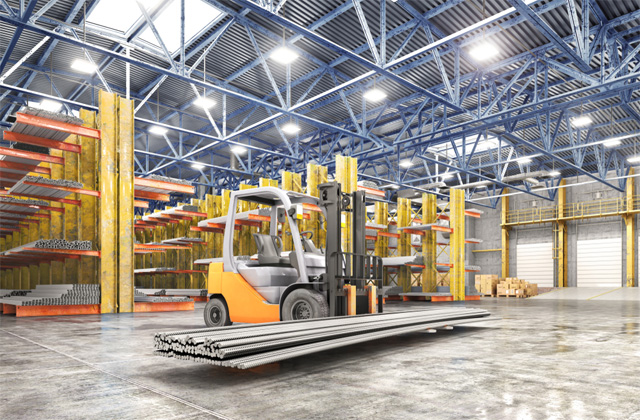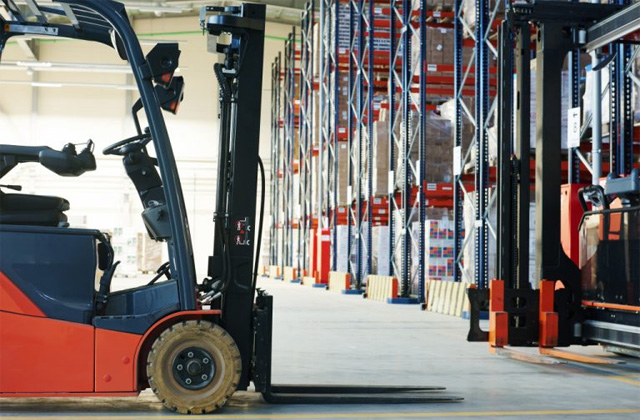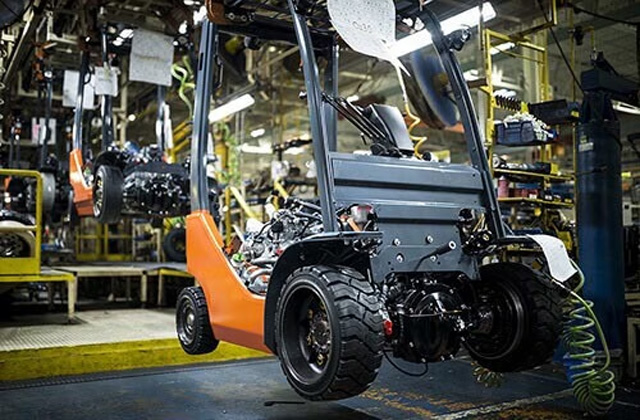In the era of rapid development of automation and intelligence, logistics equipment has also ushered in a quiet but highly destructive change. Electric forklifts, as an important representative of industrial vehicles, are gradually replacing traditional internal combustion forklifts and becoming the main force of green handling. However, many people do not understand the complex manufacturing process and core technology behind this.

1. The era background of electric forklift manufacturing: not replacement, but reshaping
Although traditional internal combustion forklifts are powerful, they consume a lot of fuel and cause high pollution. Against the background of increasingly stringent environmental regulations and increasingly urgent carbon neutrality goals, their market share has declined year by year. Electric forklifts have gradually become the new favorite of the market due to their advantages such as zero emissions, low noise, and low operation and maintenance costs. Especially in industries with extremely high environmental requirements such as food, medicine, e-commerce, and 3C, electric forklifts have almost become "standard".
However, it is not easy to produce an electric forklift with truly excellent performance. From motor design, transmission structure, to vehicle control system and battery management, every link tests the technical strength of the manufacturer.
2. Revealing the core structure: the "soul puzzle" of a high-performance electric forklift
1. Motor system: the "wrestling field" of efficiency and energy consumption
The motors of electric forklifts are mainly divided into DC motors and AC induction motors. In recent years, with the advancement of control technology, AC permanent magnet synchronous motors have become the mainstream choice. It is not only efficient, but also has large starting torque and compact structure, which is more suitable for high-frequency industrial environments.
High-quality manufacturers such as Shuangchao Machinery have deep accumulation in this field. Its self-developed electric drive system is equipped with an efficient vector control algorithm, which can automatically adjust the output power according to the load. It is both energy-saving and powerful, and is widely welcomed by high-end manufacturing companies.
2. Battery and BMS system: not only power, but also a smart center
Electric forklifts usually use lead-acid batteries or lithium batteries. The former is low-cost, and the latter has a long life and fast charging. The current mainstream trend is rapidly leaning towards lithium iron phosphate batteries because it has good thermal stability, is not easy to ignite and explode, and is suitable for heavy-load and high-frequency operations.
More importantly, the battery management system (BMS) plays a decisive role in the performance of electric forklifts. It monitors battery temperature, voltage, current and other parameters in real time, and intelligently adjusts the charging and discharging strategy. On this basis, Shuangchao Machinery further introduced the Internet of Things architecture and built a "cloud BMS platform" to allow customers to remotely monitor the battery health of each forklift and realize large-scale digital management of the fleet.
3. Control system: precise "brain", precise dispatching and control
Modern electric forklifts have widely adopted CAN bus control systems, which can connect modules such as drive controllers, brake controllers, and steering controllers to improve the response speed and coordination ability of the entire vehicle.
Shuangchao Machinery's independently developed "SPAS intelligent control system" integrates AI speed control logic, which can achieve high-level functions such as ramp slow start, automatic parking to prevent slipping, and steering speed limit, allowing forklifts to "feel at ease" in narrow storage spaces.
3. Detailed explanation of the production and manufacturing process: an industrial symphony from steel to complete vehicles
The manufacturing of electric forklifts is not simple, especially high-end customized equipment, which requires lean manufacturing of the entire process from parts to assembly lines.
1. Structural design and simulation
In the early stages of product development, engineers will use CAD and CAE tools to perform 3D modeling and simulation analysis on the frame structure, motor layout, battery counterweight, etc. Simulation tools can predict the performance of forklifts under different loads, temperatures, and ramp conditions in advance, and optimize structural design.
For example, Shuangchao Machinery can "virtually assemble" the entire vehicle in advance during the design phase through its self-developed digital prototype platform, and test its stability under extreme working conditions, effectively reducing R&D costs and error rates.
2. Sheet metal processing and welding robot collaboration
Forklift bodies are mostly made of high-strength steel. Modern manufacturers generally use laser cutting equipment and multi-axis CNC bending machines to improve part processing accuracy while ensuring strength.
In the welding process, Shuangchao Machinery introduced multiple groups of collaborative robot units, coupled with a laser penetration monitoring system, which can achieve highly consistent weld quality and improve the fatigue resistance of the entire vehicle.
3. Assembly and testing: precision + standardized final polishing
From the installation of motors and battery packs to the takeover of hydraulic systems, the assembly process must be highly modular and standardized. Shuangchao Machinery has created a "U-shaped assembly island" and adopted error-proofing technology + sensor monitoring technology to ensure that every step of the operation is traceable and correctable.
Before the finished vehicle leaves the factory, it must pass more than 20 standardized tests such as bench load test, EMC electromagnetic compatibility test, and driving endurance test to ensure that each forklift can achieve the reliability of Industry 4.0.
4. Personalized customization and intelligent networking: not a forklift, but a set of solutions
In large-scale manufacturing companies and modern warehousing and logistics companies, the use scenarios of forklifts are highly complex and changeable. This requires manufacturers to have strong customization capabilities and intelligent joint control solutions.
1. Personalized body customization
Different warehouse heights, lane widths, and shelf structures have different requirements for forklift mast height, tire diameter, and operating field of view. Shuangchao Machinery has the ability to develop independent molds, and can quickly customize "non-standard vehicles" for customers, and comply with international certifications such as CE and ISO.
2. Data-driven and IoT joint control
Through the integration of on-board sensors and cloud platforms, forklifts can achieve collaborative management of "man-machine-object-system". The "FMS Intelligent Fleet System" launched by Shuangchao Machinery can track vehicle operation trajectory, battery health, fault warning and other data in real time, greatly improving customer asset management efficiency.
3. Exploration of autonomous driving technology
Although autonomous driving forklifts are still in the exploratory stage, they have gradually been commercialized in fixed path handling and repetitive task environments. Shuangchao Machinery has also made some arrangements in the field of AGV/AMR forklifts. Its "visual navigation + laser radar" solution can achieve 5cm-level path accuracy and is widely used in unmanned warehousing and night operation scenarios.
5. Green manufacturing and sustainable concepts: not only electric, but also an environmental pioneer
Electricity is only the first step. Truly advanced manufacturers are driving the entire production chain to evolve towards "green and low-carbon".
1. Green materials and recycling system
Shuangchao Machinery uses environmentally friendly materials such as renewable paint, lead-free cables, and low-carbon steel, and has established a recycling and disassembly system for old cars to achieve secondary use of key components and reduce carbon footprint.
2. Zero-emission production line
The headquarters factory adopts clean energy + heat recovery system, reducing carbon emissions by more than 80%. It has been rated as a "national green factory" and has set a benchmark image in the industry.
6. Brand power and global strategy: from "manufacturing" to "intelligent manufacturing" and "intelligent control"
With the rise of global logistics demand, Chinese electric forklift manufacturers are accelerating their "going out". Emerging brands represented by Shuangchao Machinery have established after-sales outlets in Southeast Asia, Latin America, the Middle East and other markets, and cooperated with international logistics giants to promote "Chinese intelligent manufacturing" to the world.
They not only provide a single product, but also output "intelligent logistics equipment overall solution", integrating intelligent handling, automated sorting, and energy management, becoming an indispensable "digital neuron" in modern logistics systems.
Behind the seemingly quiet warehouse, electric forklifts are driving the triple revolution of material flow, information transmission and energy reconstruction. Only those companies that truly master core technologies, understand customer needs, and have sustainable manufacturing capabilities can stand out in this silent but fierce competition.


